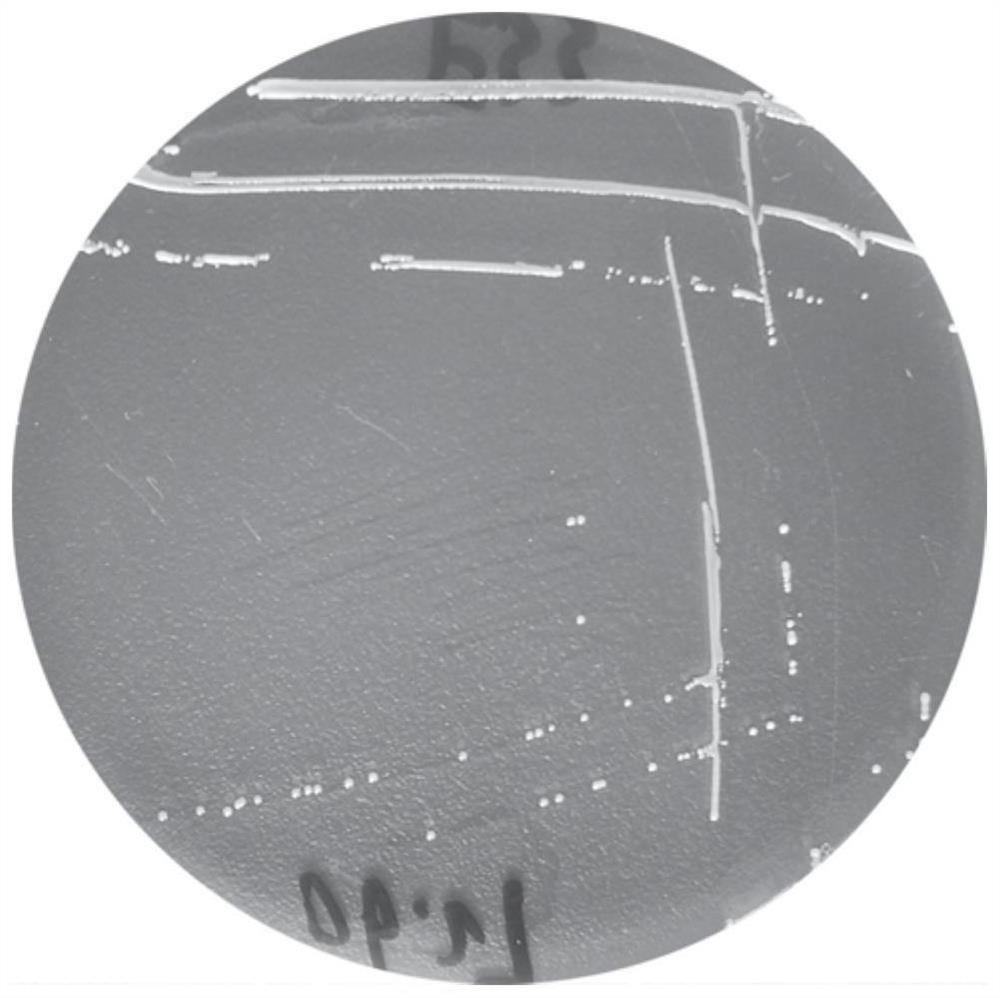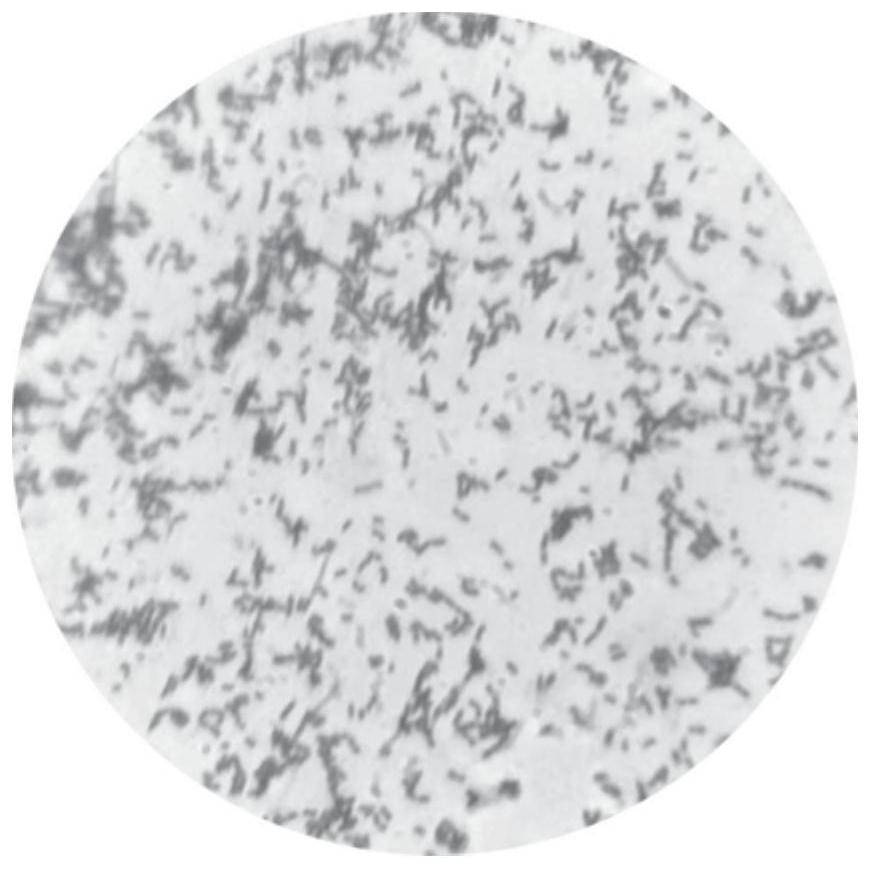Lactobacillus salivarius NHE-LsE33 and application thereof
A technology of Lactobacillus salivarius and bacterial agent, applied in the directions of Lactobacillus salivarius, application, bacteria, etc., can solve problems such as failure to fundamentally inhibit or kill mold, and the effect is not very ideal.
- Summary
- Abstract
- Description
- Claims
- Application Information
AI Technical Summary
Problems solved by technology
Method used
Image
Examples
Embodiment 1
[0065] Example 1 Isolation, screening and identification of Lactobacillus salivarius NHE-LsE33
[0066] 1. Isolation and purification of lactic acid bacteria:
[0067] After the healthy piglets were slaughtered and the intestines were taken, 2.5 grams of intestinal contents were quickly collected under aseptic conditions, placed in a triangular flask filled with 22.5mL of sterilized saline, and shaken at a constant temperature at 37°C for 1 hour, then used 10 times The specific dilution method is to dilute to 100,000 times in turn, choose three dilutions of 1,000 times, 10,000 times and 100,000 times, draw 0.1mL and spread it on the improved MRS agar plate, and incubate the plate upside down at 37°C for 48 hours after coating. Use an inoculation loop to pick out the colonies of suspected lactic acid bacteria with obvious calcium-dissolving circles and larger than 5mm, and carry out streak isolation and culture on the MRS agar plate. After 48 hours of cultivation, pick the colo...
Embodiment 2
[0091] The preparation of embodiment 2 Lactobacillus salivarius NHE-LsE33 fermented liquid
[0092] Get Lactobacillus salivarius NHE-LsE33 (preservation number is CGMCC No.22510) seed liquid (the live bacteria concentration is 10 9 CFU / mL) 2mL, inoculated in 100mL shake flask fermentation medium for shake flask fermentation culture; after shake flask fermentation, carry out 10L seed fermentation tank culture, take 100mL shake flask fermentation seed liquid and inoculate into 10L seed fermentation tank for seed culture , 10L fermentation tank liquid volume is 5L seed culture medium. After the cultivation, 5L of seed liquid was inoculated into the fermentation medium in the 100L fermenter to carry out fermentation culture, and the liquid volume of the 100L fermenter was 70L of fermentation culture medium. After the fermentation, the number of viable bacteria in the fermentation broth was detected to be 1.2×10 10 CFU / mL, the fermentation broth was stored in the refrigerator at ...
Embodiment 3
[0101] Example 3 Probiotic verification of Lactobacillus salivarius NHE-LsE33
[0102] On the aseptic operating table, the concentration is 10 9CFU / mL of pathogenic bacteria (enteropathogenic Escherichia coli, Staphylococcus aureus, Salmonella typhimurium, Salmonella choleraesuis, Salmonella, Shigella, Clostridium perfringens, Proteus penninii, Aeromonas hydrophila bacteria, Vibrio parahaemolyticus) bacterial suspension was added to nutrient agar cooled to 45 ℃ (for Clostridium perfringens, the medium was replaced with tryptone-sulfite-cycloserine agar, and the culture conditions required strict anaerobic conditions ) culture medium (after sterilization), and prepare a pathogenic bacteria agar plate of about 4mm, the concentration of pathogenic bacteria in the agar plate is 10 9 CFU / mL. Place the sterilized Oxford cup on the culture medium, gently pressurize it so that it is in contact with the culture medium without gaps, and after 10 minutes, add 200 μL of the preserved fe...
PUM
| Property | Measurement | Unit |
|---|---|---|
| Maximum tolerated dose | aaaaa | aaaaa |
| Effective viable count | aaaaa | aaaaa |
Abstract
Description
Claims
Application Information
 Login to View More
Login to View More - R&D
- Intellectual Property
- Life Sciences
- Materials
- Tech Scout
- Unparalleled Data Quality
- Higher Quality Content
- 60% Fewer Hallucinations
Browse by: Latest US Patents, China's latest patents, Technical Efficacy Thesaurus, Application Domain, Technology Topic, Popular Technical Reports.
© 2025 PatSnap. All rights reserved.Legal|Privacy policy|Modern Slavery Act Transparency Statement|Sitemap|About US| Contact US: help@patsnap.com



